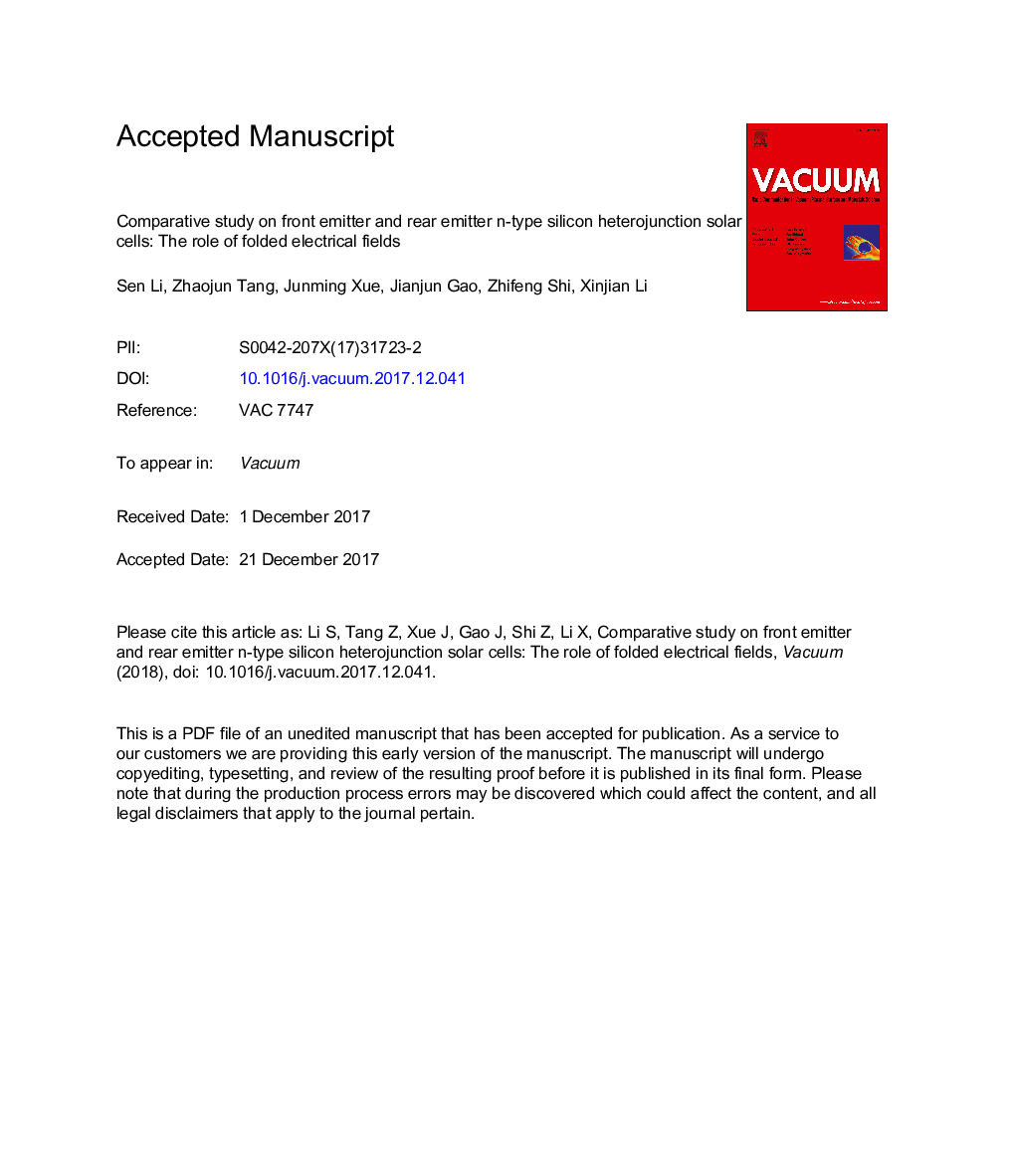| Article ID | Journal | Published Year | Pages | File Type |
|---|---|---|---|---|
| 8044634 | Vacuum | 2018 | 17 Pages |
Abstract
Here, we presented a comparative investigation on the front and rear emitter n-type silicon heterojunction (SHJ) solar cells. The cell performances showed that the rear emitter SHJ solar cell featured higher open-circuit voltage (Voc), fill factor (FF) and conversion efficiency (Eff.), but suffering from a lower short-circuit current density (Jsc). The poor Jsc agreed well with the external quantum efficiency (EQE) results, that rear emitter SHJ had a inferior EQE than the front emitter ones, although the thinner a-Si:H(n+) layer had a better optical transmittance than that of a-Si:H(p) layer. Then, by adjusting the thickness of two sides intrinsic hydrogenated amorphous silicon (a-Si:H(i)) layers in the rear emitter SHJ solar cells, the Eff.s were further improved. It was believed that the folded electrical fields formed by ITO, doped a-Si:H layers, and n-type crystalline silicon (c-Si(n)) substrate played a great role on the cell performances. Consequently, by combining the optimized thickness of doped and intrinsic a-Si:H layers, for the rear emitter SHJ solar cells, a full-area certified Eff. of 21.71% on large area of 238.9â¯cm2 substrate was obtained, with a Voc of 0.731â¯V, Jsc of 37.46â¯mA/cm2, and FF of 0.793. Note that, the 21.71% full-area conversion efficiency relates to an aperture-area conversion efficiency of 22.57%.
Keywords
Related Topics
Physical Sciences and Engineering
Materials Science
Surfaces, Coatings and Films
Authors
Sen Li, Zhaojun Tang, Junming Xue, Jianjun Gao, Zhifeng Shi, Xinjian Li,
